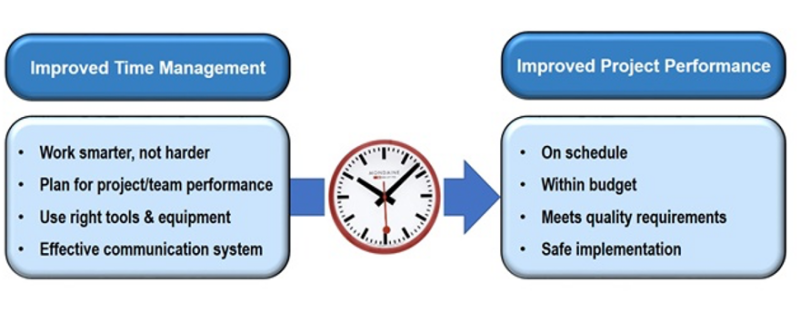Time Constraints Vs Restraints

In the world of project management, time is a critical resource, and understanding the nuances between time constraints and time restraints is essential for effective planning and execution. These concepts, though similar in name, have distinct implications and require careful consideration to ensure successful project outcomes. This comprehensive guide will delve into the intricacies of time constraints and time restraints, offering insights and strategies to navigate these challenges.
Unraveling Time Constraints

Time constraints refer to the defined limits or deadlines set for completing specific tasks or milestones within a project. They are often external factors imposed by clients, stakeholders, or the nature of the project itself. Time constraints can be seen as challenges that push project teams to optimize their processes and maximize efficiency.
Types of Time Constraints
Time constraints can manifest in various forms, each requiring a tailored approach:
- Fixed Deadlines: These are rigid time limits that must be met, often driven by client expectations or market demands. Fixed deadlines can be particularly challenging as they leave little room for flexibility.
- Flexible Deadlines: Some projects allow for a degree of flexibility, providing a window of time within which tasks can be completed. While this provides breathing room, it also demands careful resource allocation to ensure timely delivery.
- Rolling Deadlines: In dynamic projects, deadlines may be subject to change as the project progresses. Rolling deadlines require constant communication and adaptability to ensure the project stays on track.
Strategies for Managing Time Constraints
Effectively managing time constraints is crucial for project success. Here are some strategies to consider:
- Prioritization: Identify critical tasks and prioritize them accordingly. This ensures that the most important aspects of the project receive the necessary focus and resources.
- Resource Allocation: Allocate resources (human, financial, and technological) based on the urgency and importance of tasks. Efficient resource allocation can help optimize productivity.
- Communication: Open and frequent communication with stakeholders is vital. Keep them informed about potential delays or changes to manage expectations and seek their input on prioritization.
- Risk Assessment: Conduct a thorough risk assessment to identify potential delays or challenges. Mitigation plans can then be developed to address these risks proactively.
- Time Management Techniques: Implement proven time management techniques such as the Pomodoro Technique, GTD (Getting Things Done), or Kanban to improve focus and productivity.
Understanding Time Restraints

Time restraints, on the other hand, refer to the internal limitations or constraints that a project team faces. These are often influenced by the team’s capacity, skills, and available resources. Unlike time constraints, time restraints are typically within the control of the project team and can be managed through strategic planning and resource optimization.
Common Time Restraints
Project teams often encounter various time restraints, including:
- Resource Limitations: Insufficient staff, expertise, or equipment can restrict the pace and scope of a project. Effective resource planning is essential to overcome this restraint.
- Skill Gaps: Projects may require specialized skills that the team lacks. Identifying and addressing skill gaps through training or outsourcing can help mitigate this restraint.
- Budget Constraints: Limited financial resources can impact the pace of project execution, especially when it comes to acquiring additional resources or outsourcing expertise.
- Process Inefficiencies: Ineffective or inefficient processes can waste time and resources. Streamlining processes and adopting best practices can help overcome this restraint.
Strategies for Overcoming Time Restraints
Managing time restraints effectively is key to maximizing project efficiency. Here are some strategies to consider:
- Resource Optimization: Maximize the use of available resources by identifying bottlenecks and inefficiencies. Reallocate resources as needed to ensure smooth project progression.
- Skill Development: Invest in training and development to bridge skill gaps within the team. This empowers team members to take on a wider range of tasks and enhances overall project capabilities.
- Outsourcing: Consider outsourcing specific tasks or expertise to overcome skill or resource limitations. This can provide access to specialized skills without the long-term commitment of hiring.
- Process Improvement: Continuously evaluate and improve project processes to eliminate inefficiencies. Lean methodologies and Six Sigma techniques can be valuable tools in this regard.
- Collaboration: Foster a collaborative environment where team members support each other and share knowledge. This can help overcome skill gaps and enhance overall team productivity.
Case Study: Overcoming Time Constraints and Restraints
Let’s explore a real-world example of how a project team successfully navigated time constraints and restraints to deliver a complex software development project on time and within budget.
Project Overview
The client, a leading financial institution, required a comprehensive trading platform to be developed within a tight six-month timeframe. The project team faced both external time constraints and internal restraints.
| Time Constraints | Time Restraints |
|---|---|
| Fixed six-month deadline | Limited skilled resources |
| Regulatory compliance requirements | Budget constraints |
| Client's expectation of early release | Inefficient legacy processes |

Strategies Implemented
The project team adopted a multi-pronged approach to overcome these challenges:
- Resource Allocation: The team conducted a thorough skills assessment and allocated resources based on the criticality and complexity of tasks. Key specialists were identified and their expertise was leveraged across various project phases.
- Agile Methodology: Adopting an Agile approach allowed for flexibility and rapid response to changing requirements. This methodology facilitated frequent communication and adaptive planning.
- Risk Management: A comprehensive risk register was maintained, and regular risk assessments were conducted to identify and mitigate potential delays. This included contingency planning for regulatory compliance.
- Outsourcing: To overcome skill and resource limitations, the team outsourced specific tasks to specialized firms. This approach provided access to expertise without the overhead of full-time hires.
- Process Improvement: Legacy processes were analyzed and streamlined to eliminate inefficiencies. The team adopted lean principles to optimize workflow and reduce waste.
Results and Impact
Through these strategic interventions, the project team successfully delivered the trading platform within the tight six-month timeframe. The platform met all regulatory requirements and exceeded the client’s expectations in terms of functionality and user experience.
Frequently Asked Questions
How can I prioritize tasks effectively when facing time constraints?
+
Prioritization is crucial when dealing with time constraints. Consider using techniques like the Eisenhower Matrix or the ABC prioritization method. These tools help identify the most critical and urgent tasks, ensuring they receive the necessary focus.
What steps can I take to overcome resource limitations as a time restraint?
+
Resource limitations can be mitigated through strategic planning. Assess your team’s skills and identify areas where outsourcing or training can bridge gaps. Additionally, consider optimizing existing resources through efficient task allocation and process improvements.
How can I manage client expectations when faced with time constraints and restraints?
+
Open and transparent communication is key. Keep clients informed about potential delays or challenges. Provide regular updates and involve them in decision-making processes. This helps manage expectations and fosters a collaborative approach.



